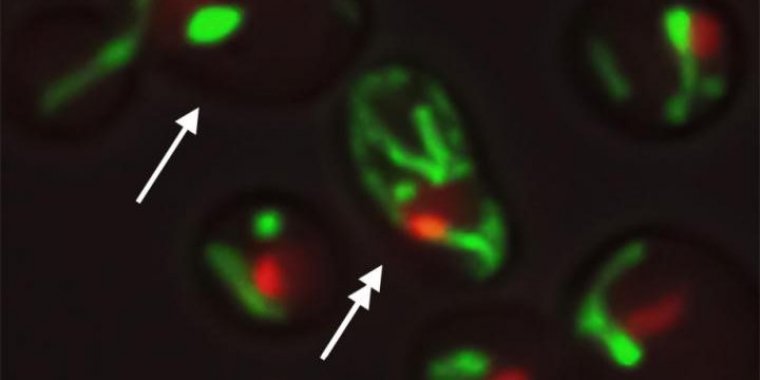| Health / Health News |
Researchers discover two paths of aging, and new insights on promoting healthspan
Molecular biologists and bioengineers at the University of California, San Diego have unraveled key mechanisms behind the mysteries of aging. They isolated two distinct paths that cells travel during aging and engineered a new way to genetically program these processes to extend lifespan.

Cells with the same DNA show different structures that may underlie different aging paths. Photo: Hao/UC San Diego
Our lifespans as humans are determined by the aging of our individual cells. To understand whether different cells age at the same rate and from the same cause, the researchers studied aging in the budding yeast Saccharomyces cerevisiae, a model for investigating mechanisms of aging, including the aging of skin and stem cells.
The scientists discovered that cells of the same genetic material and within the same environment can age in strikingly distinct ways, their fates unfolding through different molecular and cellular trajectories.
The researchers found that about half the cells age through a gradual decline in the stability of the nucleolus, a region of nuclear DNA where key components of protein-producing "factories" are synthesized. In contrast, the other half age due to dysfunction of their mitochondria, the energy production units of cells.
The cells embark upon either the nucleolar or mitochondrial path early in life and follow this "aging route" throughout their entire lifespan, through decline and death. At the heart of the controls, the researchers found a master circuit that guides these aging processes.
"To understand how cells make these decisions, we identified the molecular processes underlying each aging route and the connections among them, revealing a molecular circuit that controls cell aging, analogous to electric circuits that control home appliances," said Nan Hao, senior author of the study.
"Our study raises the possibility of designing gene or chemical-based therapies to reprogram how human cells age, with a goal of effectively delaying human aging and extending human healthspan." (National Science Foundation)
YOU MAY ALSO LIKE





